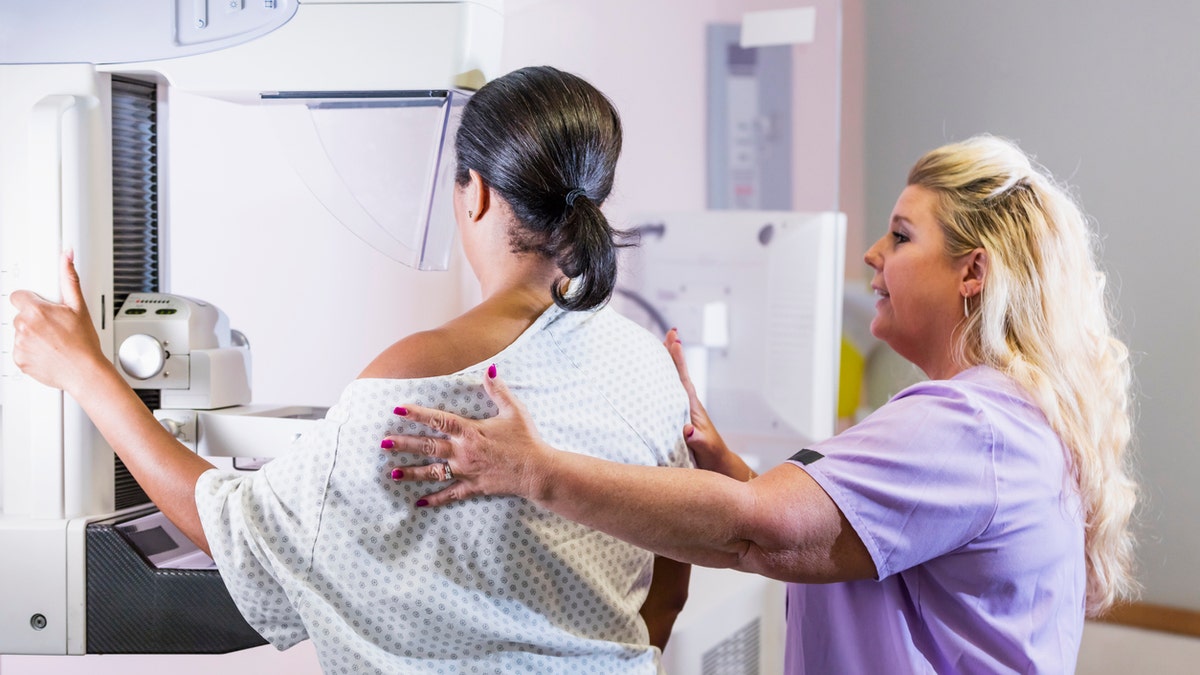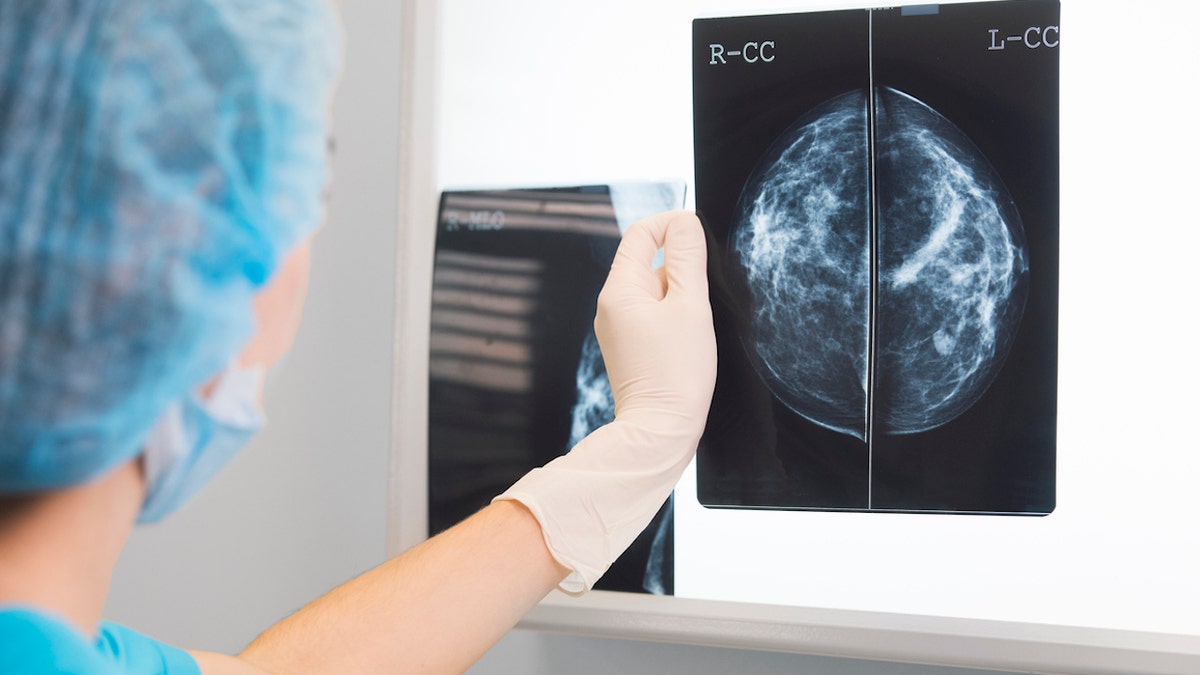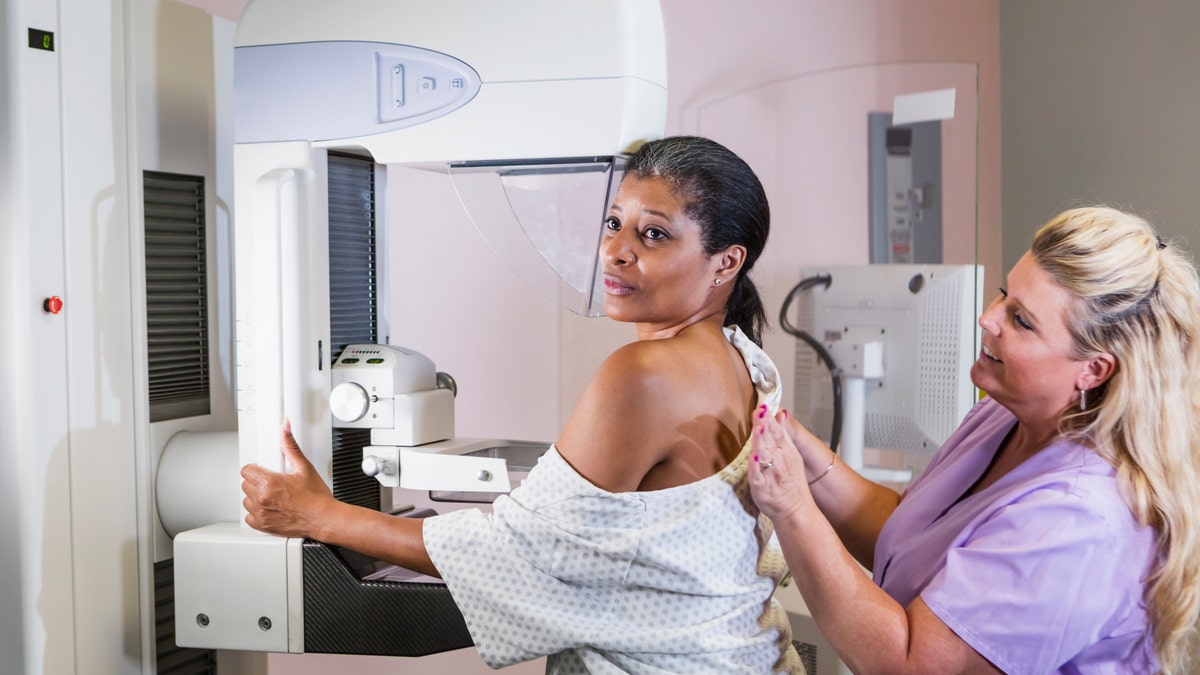Missing mammograms: Over 20% of women don’t follow breast cancer screening guidelines, study says
A new report has found that 21.7% of U.S. women aged 50 to 74 — around one in five — are not getting mammogram screenings at the recommended frequency.
The United States Preventive Services Task Force (USPSTF), made up of doctors and disease experts, recommends mammograms every two years for women aged 50 to 74 to detect breast cancer.
HelpAdvisor, an online health and finance resource based in California, analyzed survey data from the Centers for Disease Control and Prevention (CDC) to determine the share of women in each state in that age range who had not had a mammogram within two years.
NEW BREAST CANCER SCREENING GUIDELINES CALL FOR WOMEN TO START MAMMOGRAMS AT AGE 40
At least a quarter of the women in 13 states are not following the expert recommendations, the report found.
The state with the highest degree of non-compliance was Wyoming, where 34.2% of women aged 50-74 did not have a mammogram within two years.

A new report found that 21.7% of U.S. women aged 50 to 74 — around one in five — are not getting mammogram screenings at the recommended frequency. (iStock)
“A shocking percentage of older women are not receiving mammograms at the recommended intervals,” said lead study author Christian Worstell, a senior Medicare and health insurance expert with HelpAdvisor.
5 COMMON MYTHS AND MISCONCEPTIONS ABOUT BREAST CANCER, ACCORDING TO A DOCTOR
“With one out of every five women in this age group leaving themselves exposed to risk, it really makes you worry,” he went on.
“These are your mothers, sisters, wives and friends.”
Reasons for skipped screenings
Dr. Ethan Cohen, a breast radiologist and an associate professor of Breast Imaging at the MD Anderson Cancer Center in Houston, Texas, who was not involved in the study, said there are multiple reasons for noncompliance with mammography.
“The most common are socioeconomic barriers to care, limited knowledge of the benefits of screening, geographic limitations, discomfort with mammography, anxiety from the exam or the possible results, confusion with recommended screening intervals and previous negative health care encounters,” he told Fox News Digital.

The United States Preventive Services Task Force (USPSTF) recommends mammograms every two years for women who are aged 50 to 74 to detect breast cancer. (iStock)
Study author Worstell believes that many people fall victim to the “it won’t happen to me” trap when it comes to health care.
“Or perhaps they feel like ignorance is bliss and they’d rather not know,” he said.
“We’re all probably guilty of that to some extent.”
Some people also may not know that mammograms are considered preventive care and are protected as a free service under most health insurance plans, he pointed out.
“Many people fail to realize that many types of preventive care, like mammograms, won’t cost a thing under the right circumstances.”
“We tend to assume that anytime we visit a doctor, we will have to reach into our pocket, and that keeps some of us away,” Worstell said.
“Many people fail to realize that many types of preventive care, like mammograms, won’t cost a thing under the right circumstances.”

Some people also may not know that mammograms are considered preventive care and are protected as a free service under most health insurance plans, the study author pointed out. (iStock)
There are still millions of uninsured women in the U.S., however, who do not have access to a covered mammogram and may not be able to afford to pay for one out of pocket, he noted.
“Lastly, many people may just not be aware of the recommended ages and frequencies at which mammograms should be done,” Worstell said.
Ways to boost compliance
While health agencies generally do a pretty good job of building awareness around breast cancer, Worstell said, they may be falling short in sharing that mammograms can be free of charge for most people.
BREAST CANCER DRUG COULD HAVE POTENTIALLY SERIOUS SIDE EFFECT, NEW RESEARCH REVEALS
“Doctors and other health care providers could also take more initiative in sending out yearly reminders about mammograms and communicating to their patients that it likely will not cost them anything,” he told Fox News Digital.
“We can all do our part by reminding our loved ones of the importance of mammograms and encouraging them to make an appointment.”
Benefits vs. risks of mammograms
The only people who should not follow the recommended screening schedule, said Cohen, are women who have had both breasts surgically removed and older women with multiple serious medical issues who, after a thorough discussion with their health care provider, have decided that the benefits of screening no longer apply.
Screening mammography saves lives, Cohen said, because it identifies early, asymptomatic breast cancer when it’s more easily treatable.
“Women who are not regularly screened are at higher risk of developing symptomatic cancer, which has a worse prognosis and is more difficult to treat.”
“Women who are not regularly screened are at higher risk of developing symptomatic cancer, which has a worse prognosis and is more difficult to treat,” he told Fox News Digital.
Data indicate that screening mammography reduces death from breast cancer by 20% to 50%, according to Cohen.

Screening mammography saves lives, Cohen said, because it identifies early, asymptomatic breast cancer when it’s more easily treatable. (iStock)
“The main risk of undergoing regular mammograms is what we call a false-positive result, which is where the mammogram identifies a finding that needs more testing and is ultimately found not to be breast cancer,” he said.
“In other words, the main risk of screening is identifying a benign finding (i.e., not cancer) that might need more testing.”
MOST WOMEN DIAGNOSED WITH EARLY BREAST CANCER WILL SURVIVE BEYOND 5 YEARS, STUDY FINDS
Some health care providers, however, are skeptical of the necessity of mammograms — or even question their safety.
Dr. Jenn Simmons, a functional medicine physician and integrative oncologist at Real Health MD in Pennsylvania, claims that mammograms are “painful, traumatic and deliver harmful, cancer-causing radiation to the breast.”

Mammograms are “painful, traumatic and deliver harmful, cancer-causing radiation to the breast,” according to one integrative oncologist in Pennsylvania who shared insights with Fox News Digital. (iStock)
Simmons also echoed Cohen’s point about the risk of false positives.
“As many as 50% of women will get called back from their screening mammogram for additional views, an ultrasound, an MRI and a biopsy,” she said.
“While screening mammograms are a free service, these additional studies are very expensive. This is especially problematic when we consider the fact that the vast majority of the time, these are false positives and there is no worrisome pathology.”
CLICK HERE TO SIGN UP FOR OUR HEALTH NEWSLETTER
As a potential screening option, Simmons pointed out that QT imaging (quantitative transmission ultrasound) is poised to become available in the next few years.
“QT imaging is a novel imaging technique that is safe, fast, relatively inexpensive, has 40 times the resolution of MRI, and is poised to replace all the current breast imaging techniques,” Simmons predicted.
CLICK HERE TO GET THE FOX NEWS APP
QT Imaging’s website, however, states that the technology is “not intended as a replacement for screening mammography.”
Jay Baker, M.D., a breast imaging specialist at Duke Health in North Carolina, said in June that regular screening can reduce lives lost by 25% to 40%, according to Duke’s website.
For more Health articles, visit www.foxnews.com/health.




